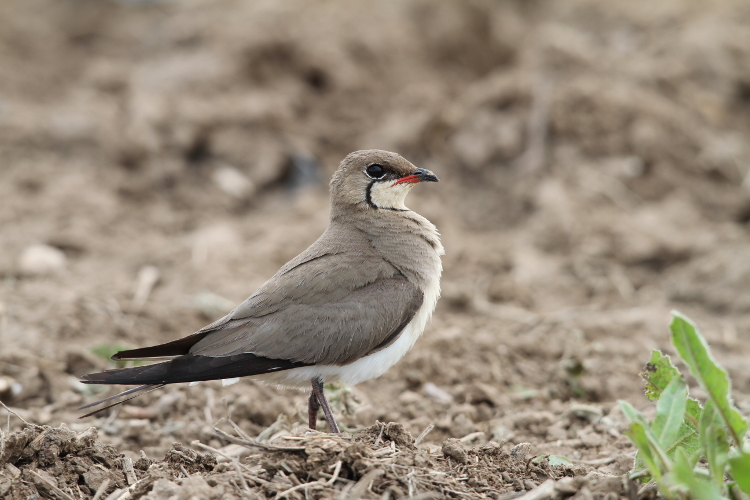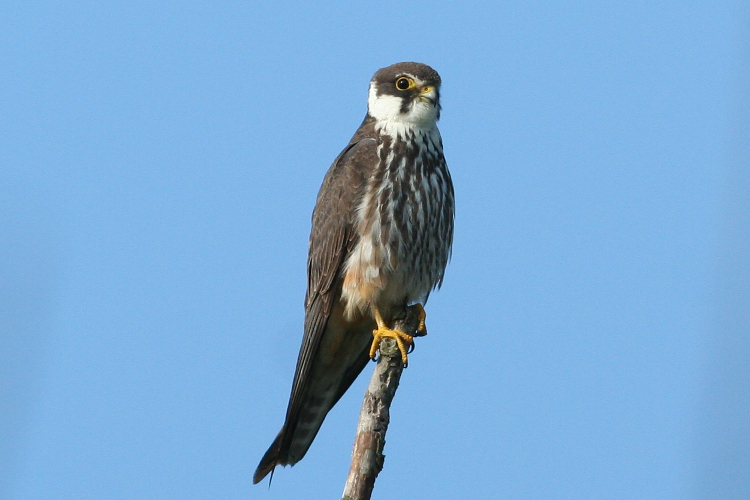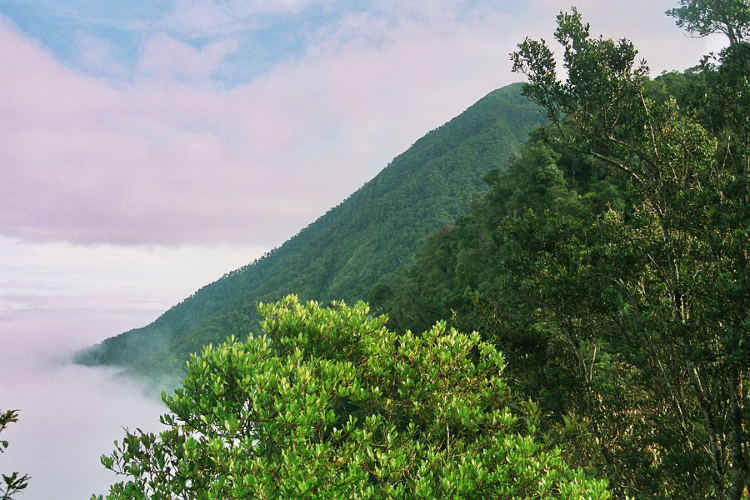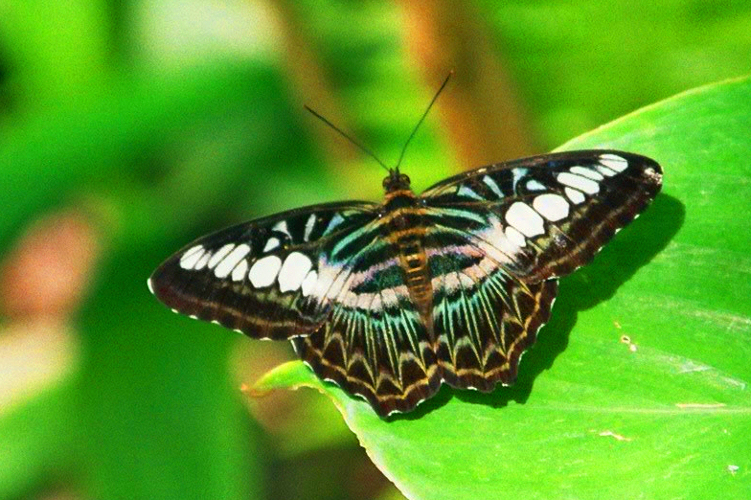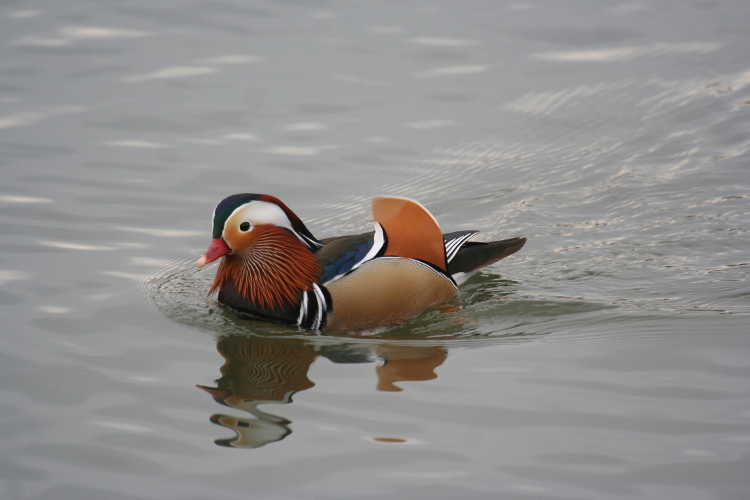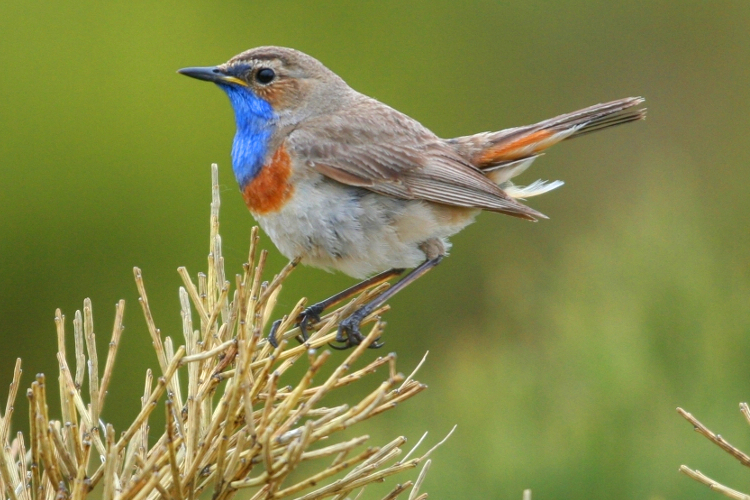LINKS





orientalbirdclub
Ayuwat Jearwattanakanok's BS
Tim Laman's WP
Festival de la photo de Montier-en-Der
National Geographic
Birds of the World
IOC World bird list
www.wikiaves.com
www.ornitho.lu
www.ornitho.ch
www.faune-grandest.org
Guislain Simard's macro-photo
jewel-beetles
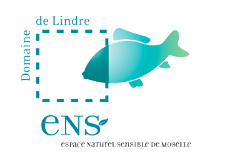





LORRAINE
This area, traditionally and mainly of German-speaking and culture but eventually conquered by France by means of recent wars shows a wide diversity of natural environments and landscapes, from the wooded area being close to Luxembourg to northern Vosges, via the lake areas forming the Lorraine regional park; the Lorraine iron and steel basin, located near Thionville is of also its interest and contains beautiful forests. The frontier part with Luxembourg and Germany is known under name Three-Frontiers and contains several pleasant spots for observation as Montenach or the Malbrouck's castle. More in the west, north of Thionville one finds the medieval citadel of Rodemack and the geological reserve of Hettange-Grande; this place is especially known for the prints of fossils but it is also a good spot for some birds like the barn owl, the kestrel falcon, the Northern Goshawk, the green woodpecker, the european skylark, the european linnet, the eurasian warbler, the grey warbler, the stonechat and the yellow bunting. The Lorraine regional park extends on a discontinuous zone of a hundred kilometers from the Madine's lake (triangle Verdun-Toul-PAM) to the swamps of Lindre, Gondrexhange and others (located 50km east from Nancy); it is the best natural spot in Lorraine; more in the south, while going towards Luneville one will find the forest of Parroy and the neighbourhoods which are one of the favorite places of nesting of collared flycatcher.
In the south of Nancy the hill of Sion is where one could observe amongst other things, the hoopoe, the white-front redstart and the eurasian wryneck, but this zone suffered much from the storm of 1999. Eventually, don't neglect the city parks which can book good surprises like the nesting of a peregrine falcon on the cornice of a church or the invasion of boreal waxwings often seen in the suburban parks of Nancy in winter.
Madine's lake
The Madine's lake is located in the west part of Lorraine's regional park (between Verdun and Nancy) and comprises a mostly wild zone which start from Montsec village (close to american memorialon the hill) until Haut-Chemir's swamp; there are two good spots for observation, one is located at the exit of Montsec, the other near the village of Heudicourt. This zone attracts numerous wild animals such as deers, fox, wild-cat but also a large number of species of birds: not less than 10 species of raptors can be seen or sighted there: black kite, red kite, osprey, western marsh-harrier, hen harrier, eurasian buzzard, peregrine falcon, kestrel falcon, northern goshawk and eurasian sparrowhawk; also a wide number of water-birds, ducks, grebes, swan and coots are present; main passerines are the jay, yellow bunting, reed bunting, larks, wagtails and pipits, red-backed shrike, stonechat; I observed the gray shrike in winter but this bird become uncommon in France; the little owl is probably present in orchards around the lake but this specie remains rare in north France.
No observatory neither infrastructure is available for the observer, so he's preferable for him to hang good material, binoculars and so on.
Lachaussée swamp
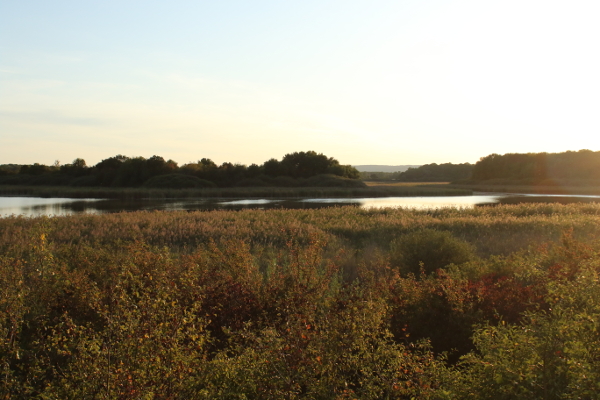
The Lachaussee swamp is located in the west part of Lorraine's regional park, not far from Madine's lake; it is smaller then this latest but three observatories remains available for observers around the swamp.
This humid zone is interesting all the year, many water birds, passerines and raptors are present either on specific season or all the year. The western marsh-harrier is an occasional breeder and the purple heron may be sighted during summer among reeds or around the lake. Cold season offers a special interest with presence of tundra swans, gray cranes and the white-tailed-eagle; this latest is generally observed on passage in flight but lucky observers may have a view on an attack on fish or a bird; tundra swans are regular in small number on swamp ans in the neighboroods; they are wary and generally not observed on close distance; grey cranes may be observed in numbers to stay around the lake every evening.
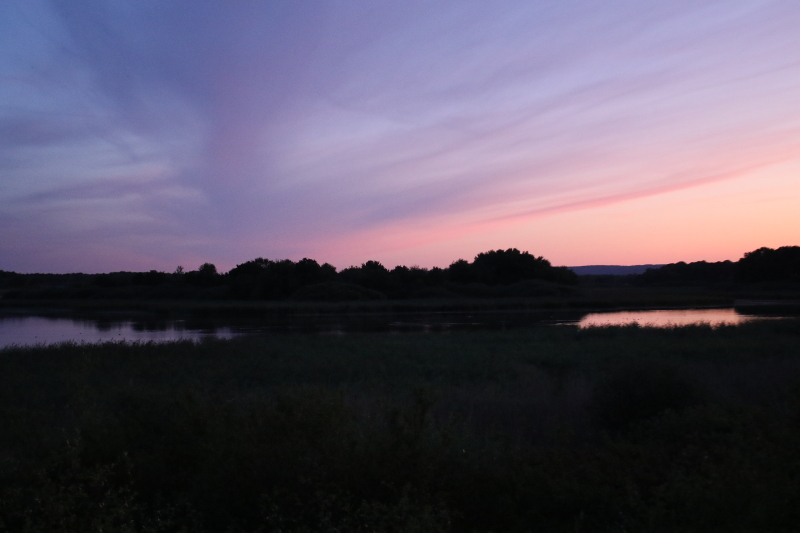
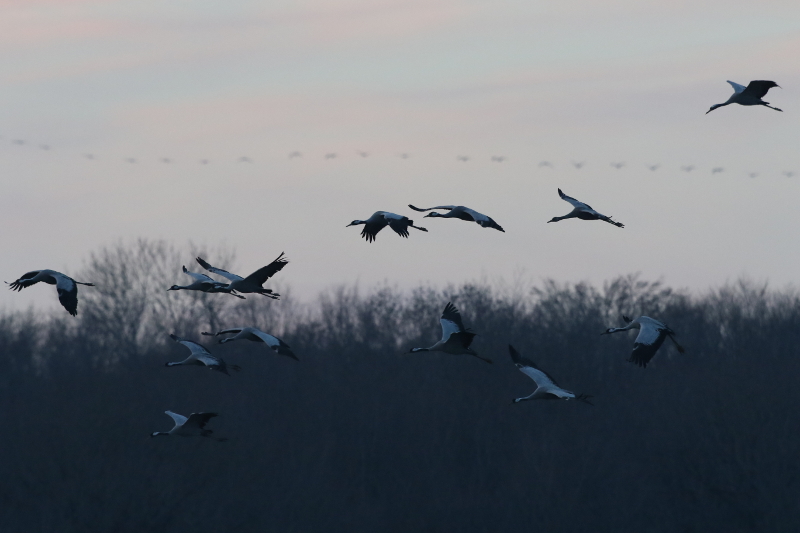
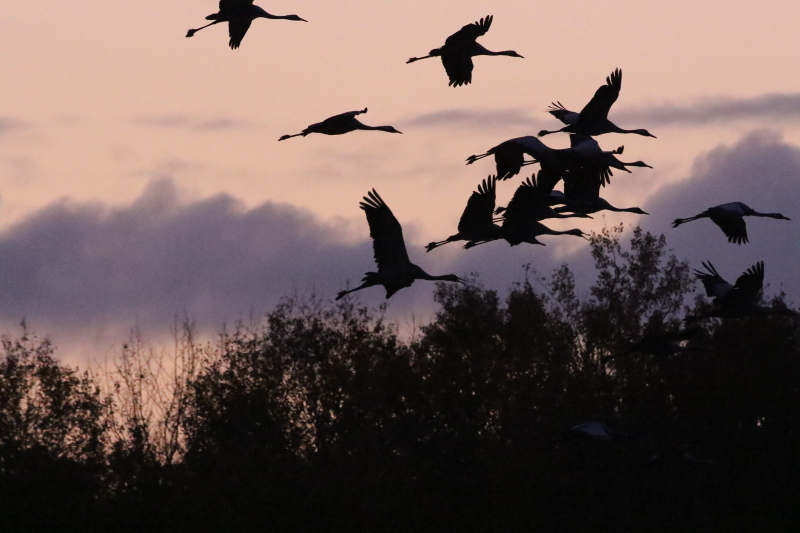

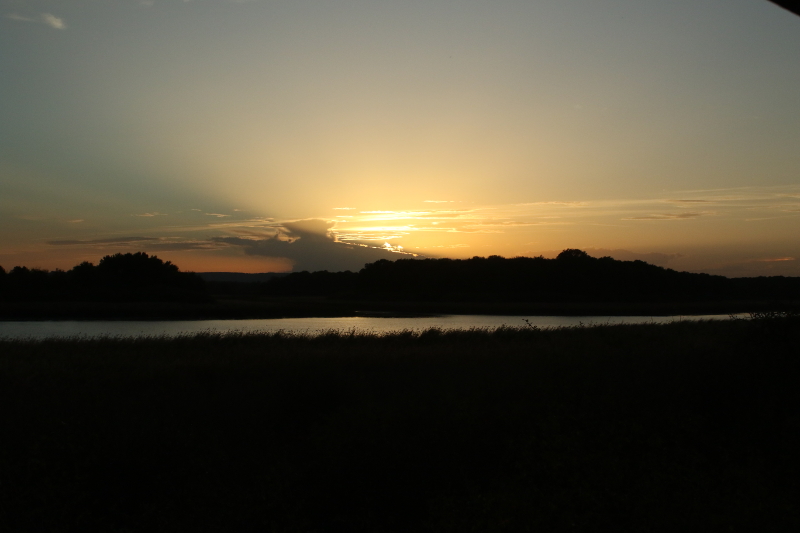
Lindre swamp
This artificial swamp is located in a lake zone in the east-part of Lorraine's regional park, approximatively 40km of Nancy; there are two main spots for obseration, one in the village of Tarquimpol but the most interesting point of view is in the village of Lindre-Basse (close to the little town of Dieuze); the domaine de Lindre is made-up in this village with a visitor center with exhibitions and sometimes possibility of excursions(more informations concerning proposed activities are available on web-site: http://www.domainedelindre.com); and especially an observatory has been recently built close to the swamp.
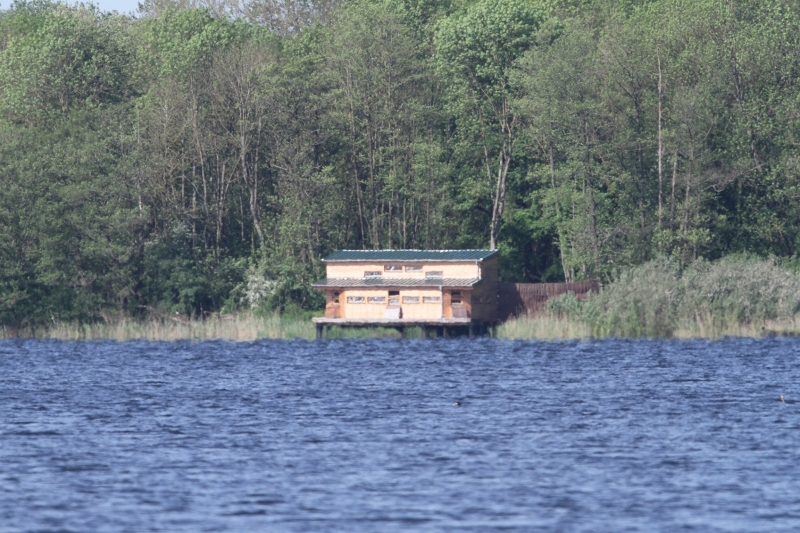
Main observable species are water-birds ducks, herons, egrets, grebes, but many species of raptors can be seen there, and of course this place is a very good point to see the white stork, but grey crane is often seen while migrating.
In 2010 I saw with some surprise presence of an isolated white pelican who standed quitely in the meadows among herons and storks; i took some shots of this individual, communicate informations to different people and then, learned by suite that the pelican was followed by observers from different countries in it's travels between Spain and Germany; he never leaved the same group of white storks and received the name of quax from german observers; it's an actual fact that pelican can be very affectionate: Commandant Cousteau, in one of this narrative report the story of one of his teammate who save one of these birds in distress;once looked after, the pelican, grateful towards its saver did not leave it any more. Unfortunately, I learned that the pelican quax was found died in the beginning of 2012.
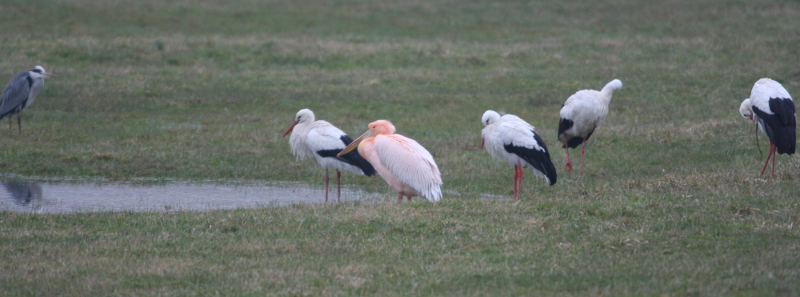
quax, the pelican in love with storks
Flora and fauna around the lake is varied, not only concerning birds, numerous animals such as badger, fox and so on, numerous bats may be seen all around.
The pond of Lindre is also an exceptional site for the observation of raptors (more than ten species are present at the neighbourhoods), often attracted by the presence of fish or other water birds, but the conditions of observation can vary according to the seasonal conditions, water level, etc.
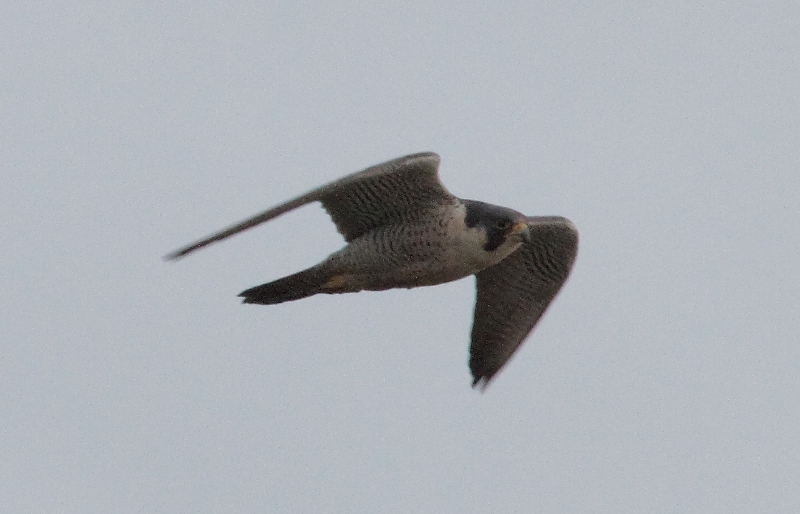
The lucky observer will be able to have view on an attack of a peregrine falcon (the swiftest) or the apparition of the majestic white tail eagle (the largest) with the nonchalant flight, the arrival of these both predatory generally causing general panic among the other birds. Presence of the white-tailed eagle is noted every year in north-east France but only in winter. 2011 year was the exception, eagles was present all the year, there were two adults and one young. White tailed eagle eats mainly fish and in general the pond provides him what is necessary for him but, on the occasion, it does not scorn to make a distorsion with its dietary habits, what I could note when I was visiting the observatory on 15 october 2011: this day, a real feast was waiting me!! water-level was low and birds numerous, shags, grebes, egrets, ducks....All this beautifull world was quietly occupied as usual when suddenly general panic was of setting: an obvious sign of an attack in rule, often arriving in pricking of a peregrine falcon but this time the aggressor was more voluminous.Most of present birds in front of observatory flew away when the raptor arriving but grebes stayed impassive; one of them (probably a young) decided to plunge under water: fatal strategy, the eagle stayed over him in the air as he look for a fish and then plunged too and go away with the grebe on his feet.
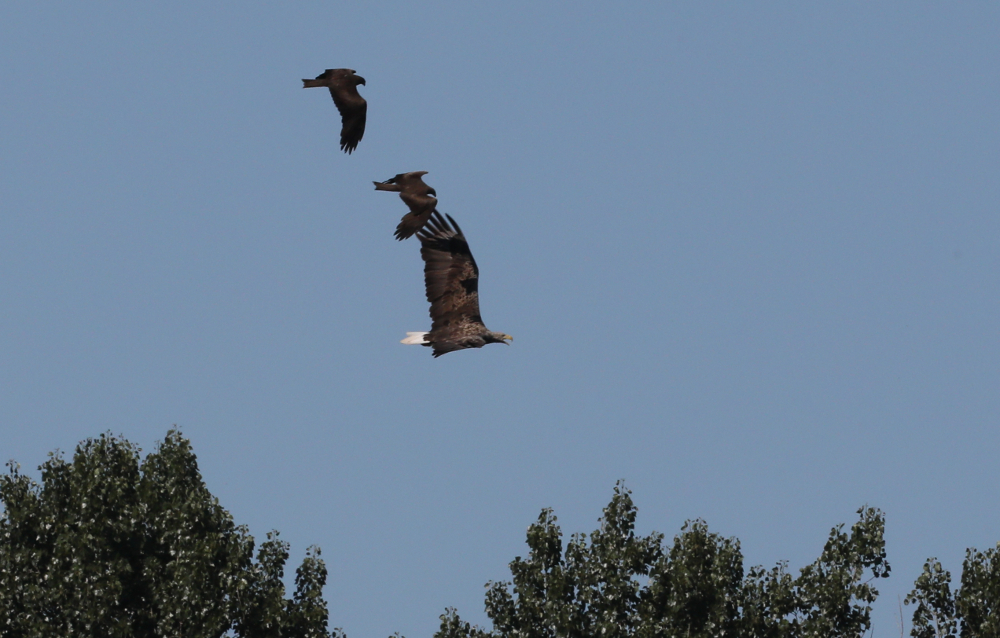
The raptor want to be posed further in the meadow, scold by crows interested by the rest of meal.
Rommersberg's forest
This forest borders the Lindre swamp on the opposite side of the same-named village, it is included in the Lindre's domain (domaine de Lindre) and from connaisseur's advice, it is the best sport for bird-watching in Lorraine.
It is one of favorite domain of collared flycatcher (in France, this specie breeds only in Lorraine), there are also lot of animals like foxes, hedgehog, wild boar and so on; among birds there raptors like western honey-buzzard, sparrowhawk or eurasian hobby (generaly found by pair, especially in july) and sometimes the peregrine falcon.
The part of forest which border the pond in forbidden to the public (except special autorisation) because of possible disturbance to breeders such as little bittern.
